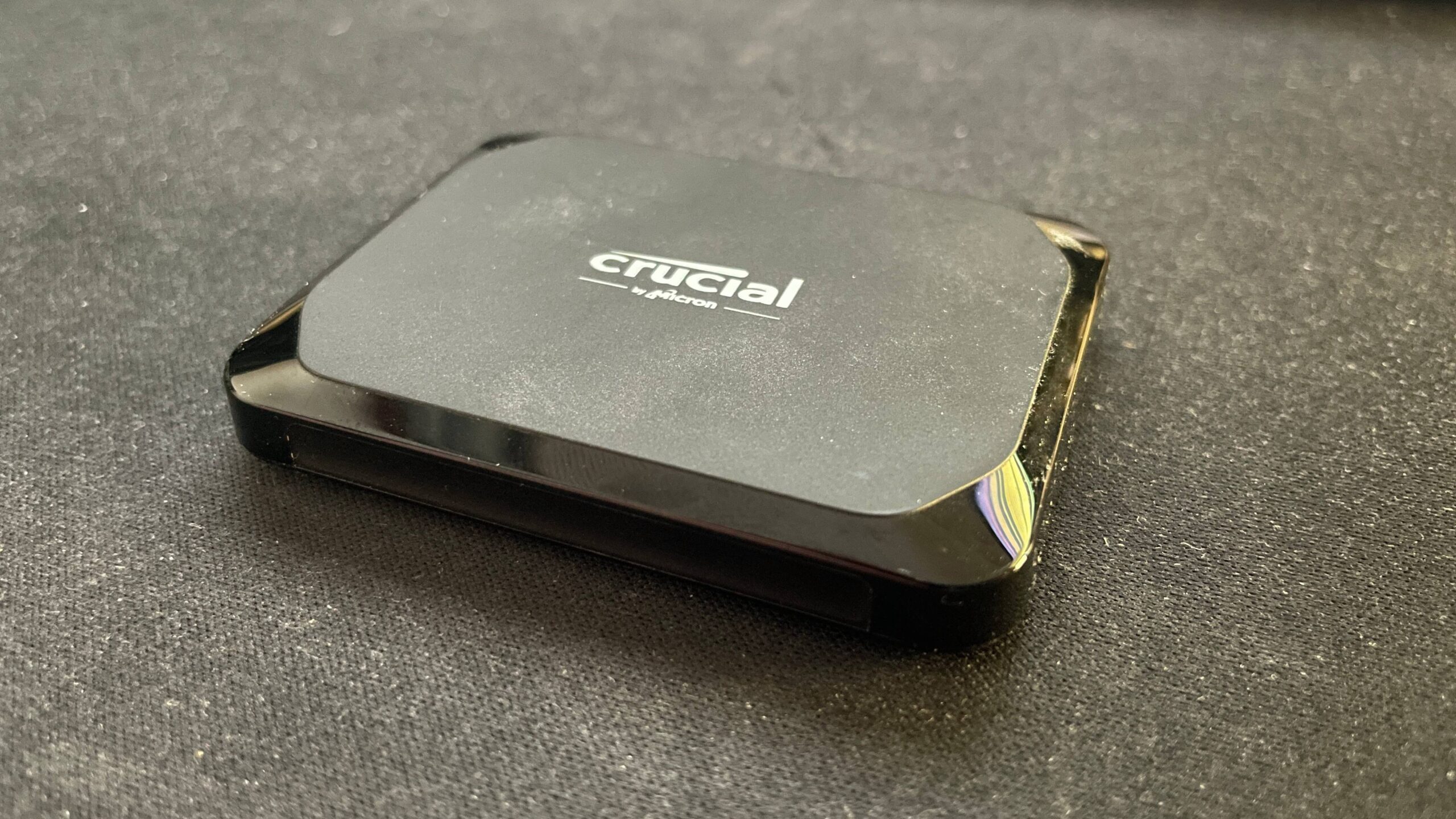The Crucial X9 surprised me a little. I’ve spent so much time with 20 Gbps external drives that I forgot the simple unassuming pleasure of a solid 10 Gbps external SSD such as the Crucial X9. Which is a shame, really, because the best USB ports on most motherboards and laptops tend to offer speeds no better than 10 Gbps as this is the maximum spec for USB 3.2 Gen 2×1 ports, and this is quick enough for most purposes.
Of course, there’s also the fact that 10 Gbps drives are often a fair bit cheaper than 20 Gbps ones, and this certainly holds true for the Crucial X9. Make no mistake, that’s a primary benefit of the X9 in today’s market: it doesn’t cost an arm and a leg.
In fact, at the time of writing, you can pick up a 2 TB version such as the one being reviewed here for just $117 at Newegg (or $109 at Amazon if you don’t mind it being imported), and a 1 TB version for just $77 at Newegg (or $70 at Amazon with the same caveat). And while the former price is admittedly with an ongoing deal, it’s frequently on sale and even when it’s not it doesn’t cost a bunch much more than this—technically a $170 MSRP, but pretty much always $135 maximum, these days.
This places it firmly in budget portable SSD territory, but that would matter nil if the Crucial X9 wasn’t also a quality little drive. Fortunately, it is. From build quality and thermal performance to, well, actual performance, the Crucial X9 works a charm, as I discovered when I saw it run rings around the PC Gamer external SSD test gauntlet.
I also found myself falling in love with its design when I used it, much as I did with the TeamGroup PD20, though for different reasons. I’m not entirely sure why it had this effect on me—perhaps there’s something about very square, puck-like products that my fingers just love to hold and my eyes love to gaze upon.
The Crucial X9 is very understated: it’s just a small, flat, squared drive with a slight curve and gloss to its edges. You can tell it’s been designed for people who will actually be using it as a portable drive, in public, for work, and so on.
It has a hole to attach a lanyard, too, just like the more sturdy metal Pro version, and if I was a lanyard kind of bloke I’d have hooked it up in a heartbeat. And speaking of sturdy, although the non-Pro version is plastic, it is “shock, vibration, and drop proof up to 7.5 feet”, according to Crucial (PDF warning).
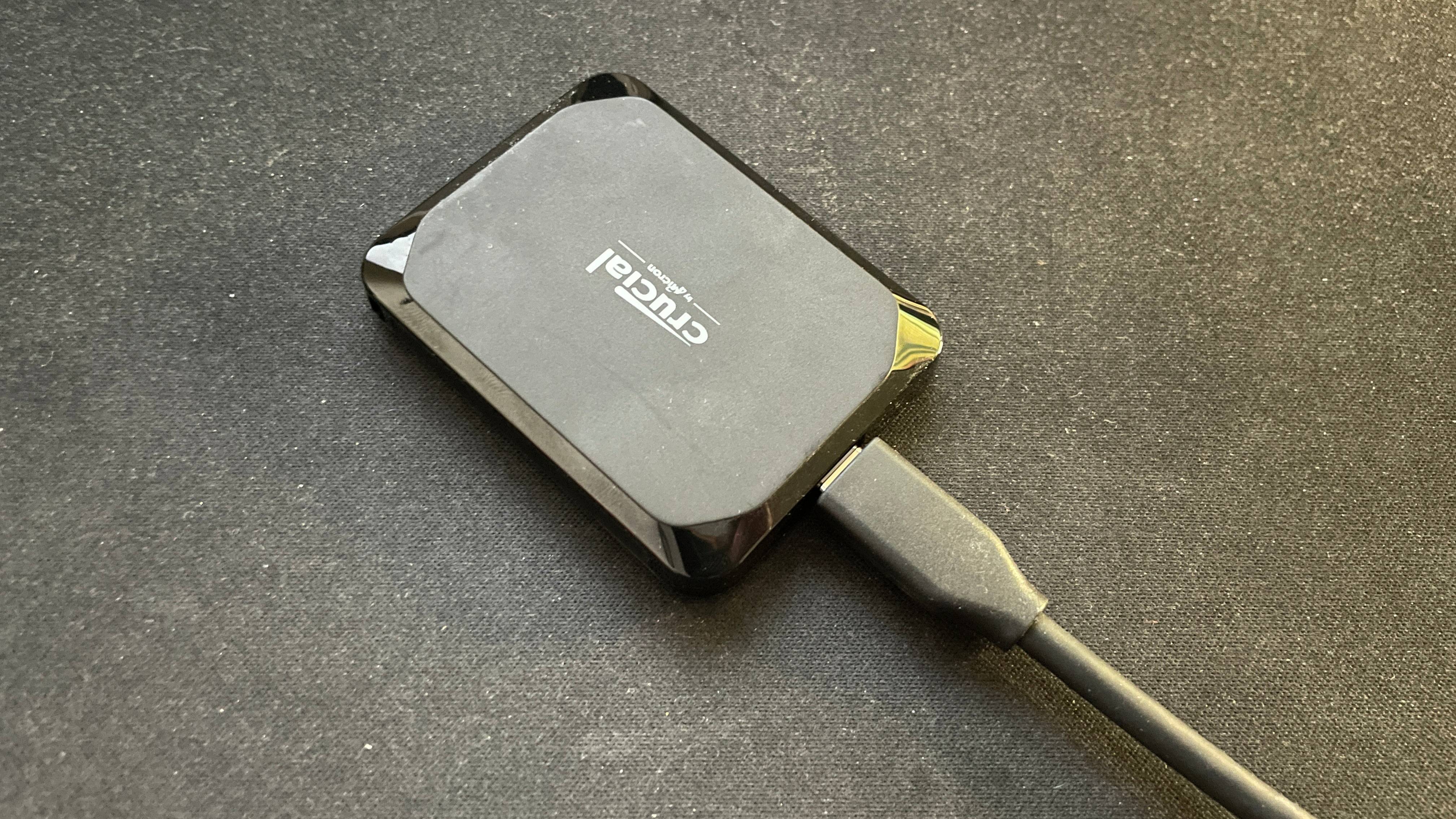
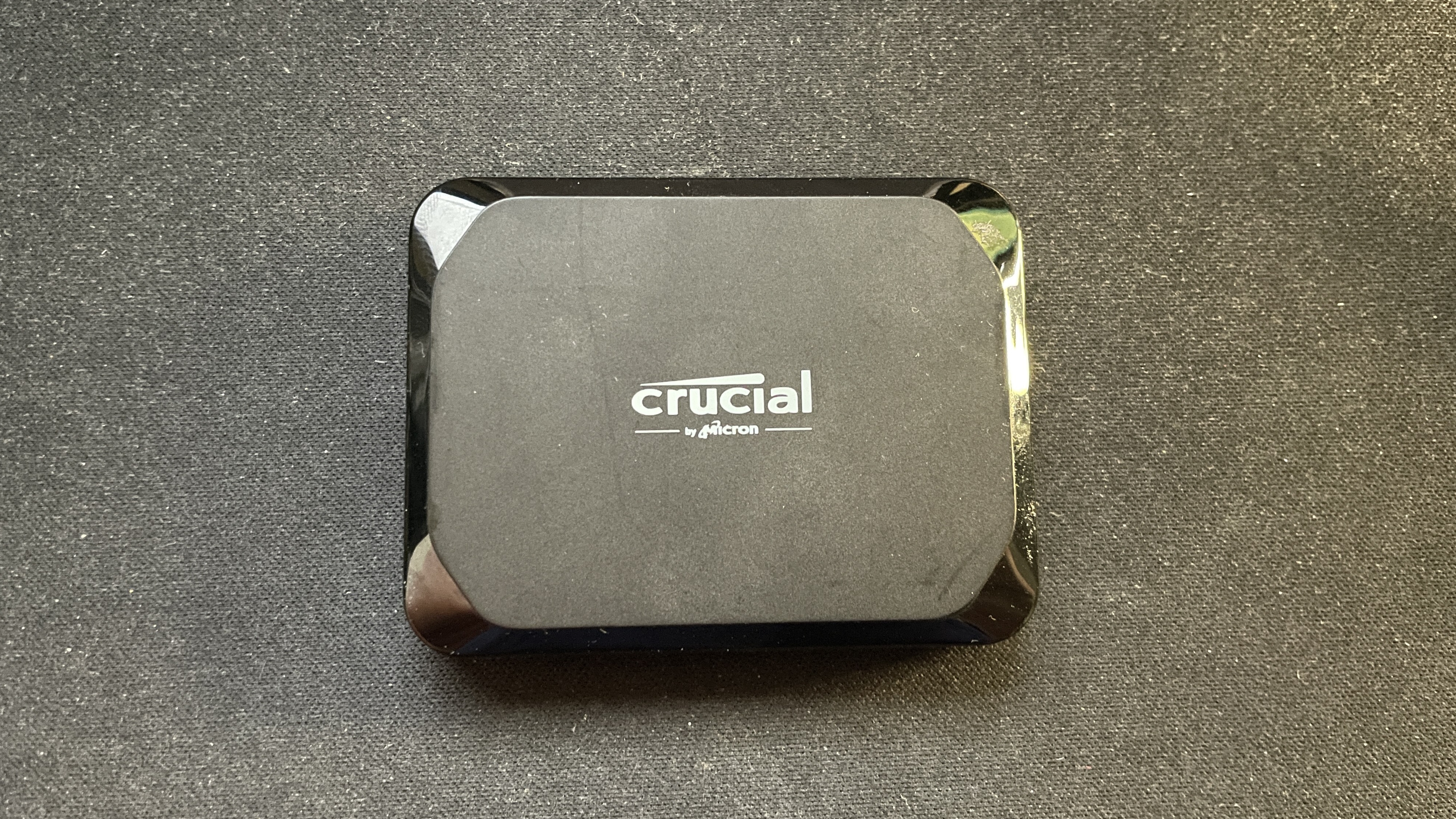
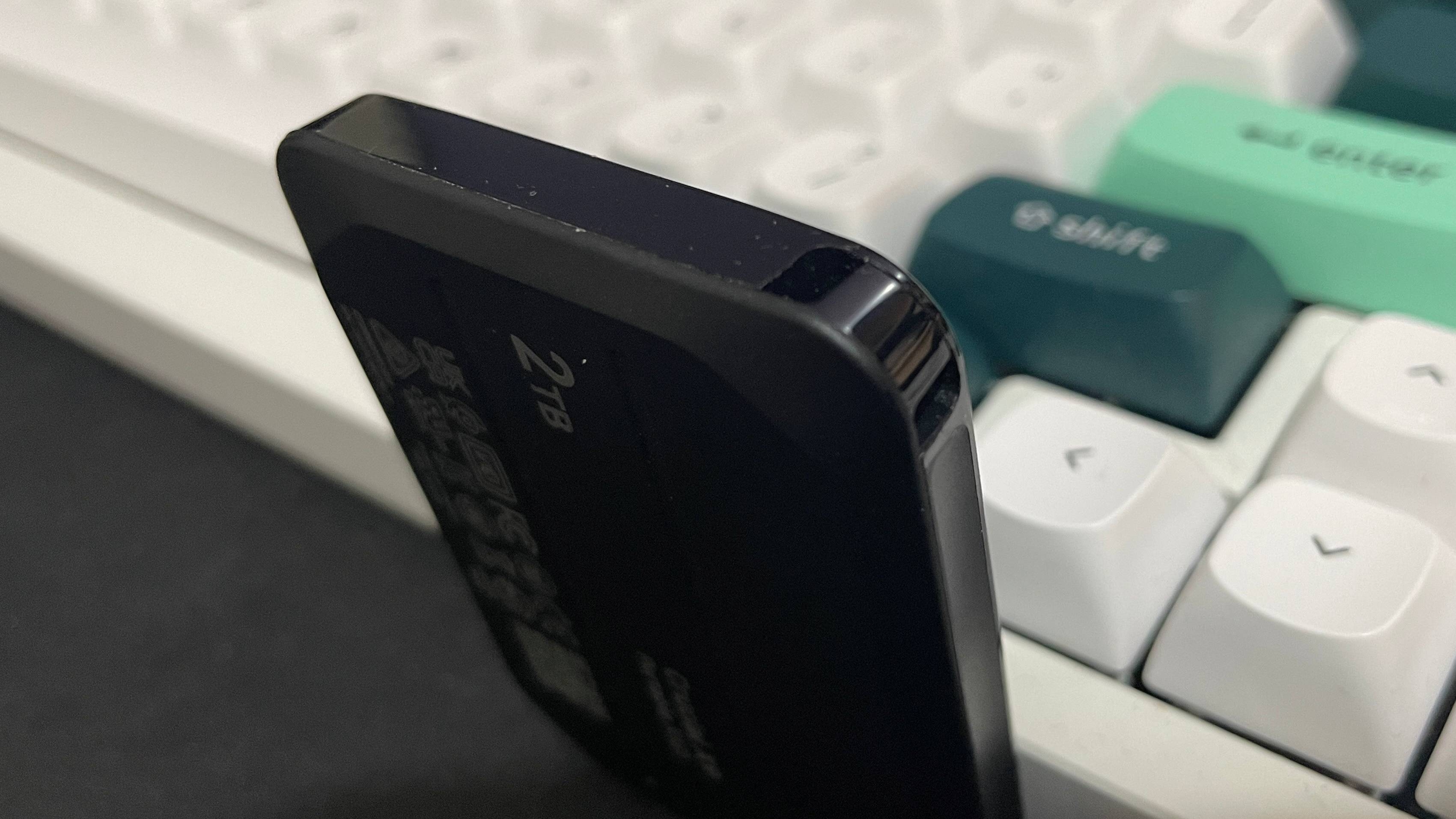
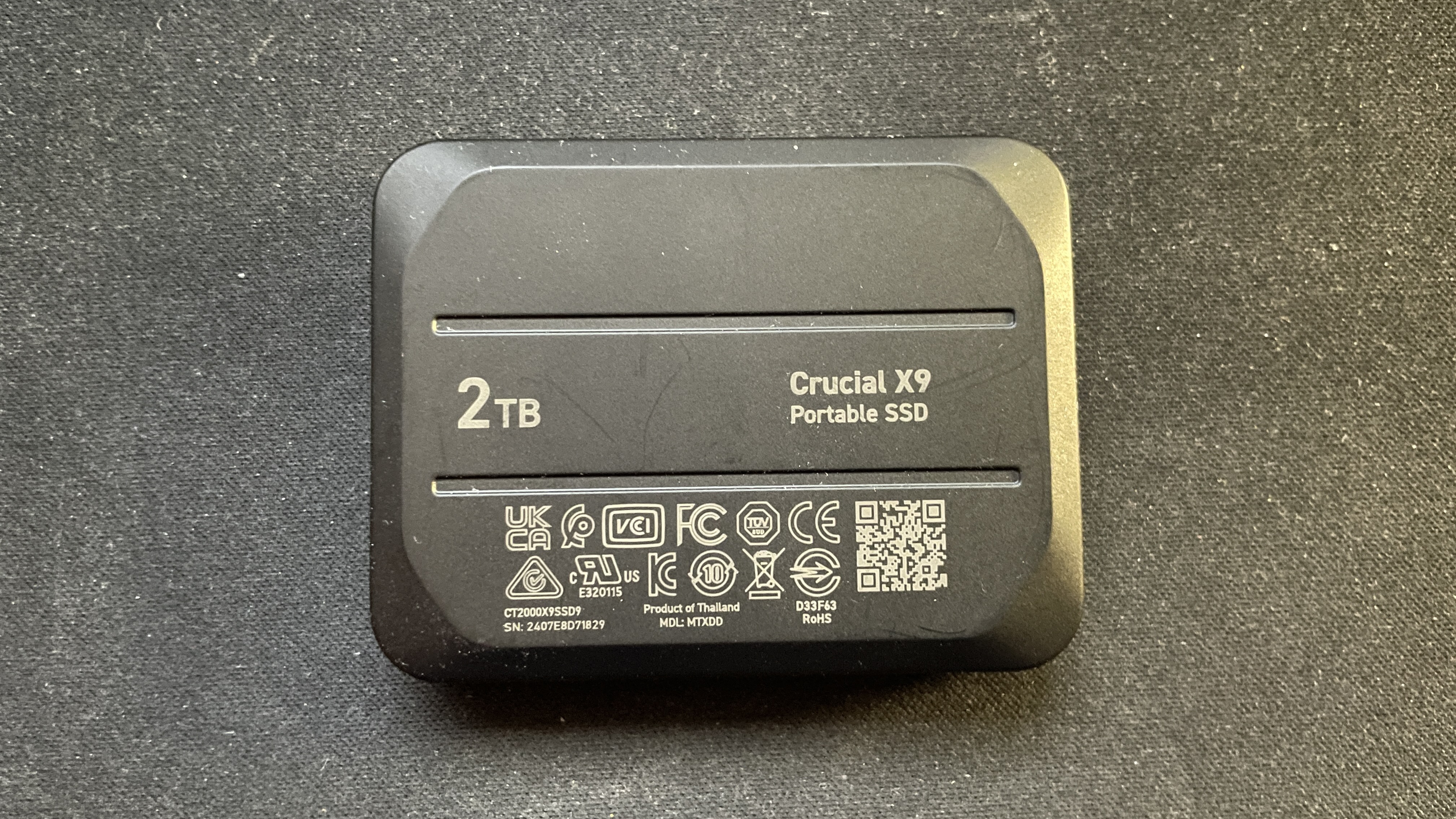
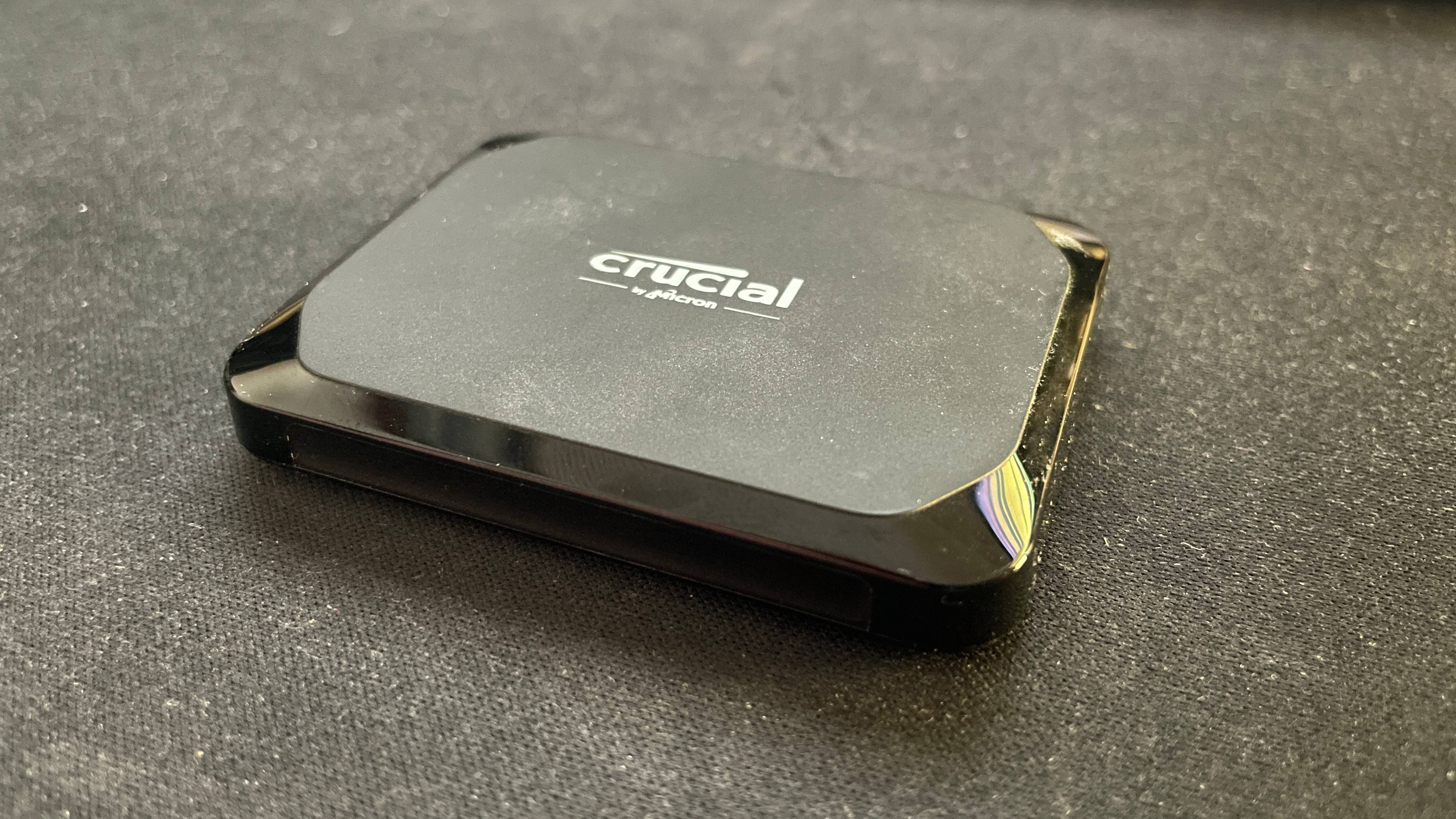
So, you should be fine unless you’re keen on sticking your arms up straight and dangling the thing precariously for that sweet hit of risk-adrenaline. No IP rating for dust protection, though, which is a shame, but the low price has to come from somewhere.
The X9 is a successor to—you guessed it—the X8, but it also competes against the X6 given the now-similar price tags. And on this front, the charts speak for themselves, don’t they? The X9 blows the X6 away, so in my eyes, unless the X6 has a particularly stunning deal on, I’d opt for the newer drive any day.
True, the X6 that I have on hand is the older 540 MB/s one, but the newer 800 MB/s one will still hit lower peaks than the X9, so the comparison holds even if the newer X6 fares a little better.
Based on my IOMeter testing, you’re looking at about six minutes of peak transfer speeds at about 960 MB/s. That should mean you’ll be able to transfer just shy of 350 GB of data over 6 minutes before the drive’s pseudo-SLC cache runs out and speeds drop.
But even after that, you see speeds return back up to peak after about a minute and a half and lasting for another minute and a half. The jumps back to peak speeds are impressively frequent and long-lasting with this drive. This quick bounce-back is because of the relatively low write speeds, which give the cache a chance to clear up swiftly.
You have little to worry about if you’re considering using this as a game drive, too. Read speeds are the name of the game for gaming, and these speeds should be far more consistent than write speeds. While it didn’t perform spectacularly in FFXIV testing, it did perform well in the 3DMark Storage benchmark, which tests a number of real-world gaming scenarios such as loading and installing various games.
Because of this, I’m inclined to believe that the X9 perhaps just doesn’t gel well with FFXIV but performs well in games overall. Its RND4k read results in CrystalDiskMark 7 are pretty good at 35.6 MB/s, and random reads are what an external SSD will spend most of its time doing when used as a game drive.


Using it as a game drive seems to work well in practice, too. I moved my 1.7 GB Crab Champions Steam install over to the drive (using the in-built Steam tool) in an instant—I swear it actually seemed to do this quicker than any other drive I’ve tested, but it’s hard to tell with sub-one-second transfers.
Anyway, booting up and running my little crustacean about was a breeze, levels loaded instantly, and I ran into no stutters or hiccups. When used to house a game library, the Crucial X9 seems to run as smooth as butter.
Of course, you’re not getting the blisteringly fast speeds of some of the latest (USB 4) drives, nor are you getting the swelteringly (?) fast speeds of somewhat more common USB 3.2 Gen 2×2 drives.
But you’re not paying those higher prices, either, and you’re likely to have more 3.2 Gen 2×1 ports than Gen 2×2 ones—do make sure you have a 3.2 Gen 2 port before you drop any cash on a 10 Gbps drive like this X9, though, because without such a port you won’t be able to make the most of it.
For such a solid performer that looks and feels great, I reckon the Crucial X9 is a great budget buy. It’s well worth the money for those looking to increase their portable storage without spending an arm and a leg.







